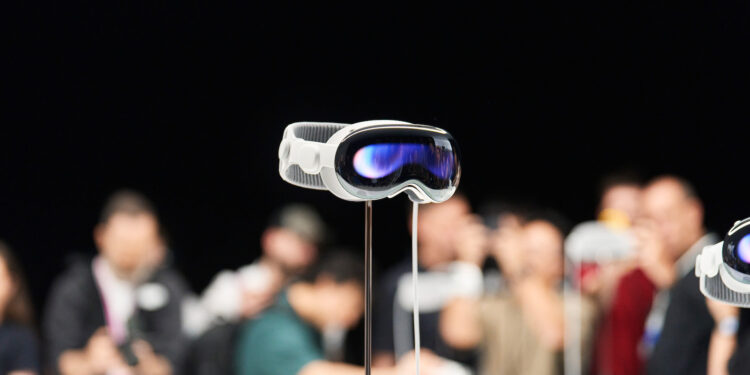Apple is facing a major challenge: the further development of its Apple Vision Pro hardware. With strong competition, especially from Meta and their Quest headset range, Apple must think carefully about the future of its mixed reality products. The Apple Vision Pro will be launched as a premium headset in a market that is already well occupied. But what's next for Apple? Various options are under discussion in order to remain competitive. Below we take a detailed look at Apple's possible strategies.
In a highly competitive market for mixed reality headsets, where Apple is facing strong competition with its Vision Pro, especially from Meta, the question arises: How does Apple plan to further develop its Vision hardware? According to a report According to Bloomberg, Apple is currently evaluating various options to remain competitive in the long term.
Option 1: Premium model and cheaper version
The most likely option Apple is currently considering is to stay the course and continue to offer the Apple Vision Pro as a premium model while launching a more affordable version. This strategy would have the advantage of allowing Apple to appeal to a wider audience. The cheaper model would be made from cheaper materials and potentially omit some high-end features, which would reduce manufacturing costs. Nevertheless, Apple would still offer a powerful Pro model for tech-savvy and affluent customers. Launching such a cheaper model could reduce the pressure on Apple to justify the high price of the Vision Pro. At the same time, the company would have the opportunity to incorporate technological advances in a second generation of the Pro model without losing market share in lower price categories.
Option 2: Smart display instead of headset
Another option Apple is considering is redesigning the headset into a smart display. In this scenario, the headset would no longer have its own computer and external battery, but would use the iPhone as a data center. This would have the advantage of making the headset lighter and cheaper to manufacture. This option would be particularly attractive to users who already own an iPhone and find it useful to use the headset as an extension of their smartphone. By removing the standalone computer element, production costs could be drastically reduced while also reducing the weight of the device.
Option 3: Development of smart glasses
Another interesting scenario is the possible development of smart glasses. Apple could, similar to Meta in collaboration with Ray-Ban, develop smart glasses that offer AR functions without the bulky design of a traditional headset. This could be an elegant and everyday solution for users who want to use augmented reality in their daily lives without having to wear a full headset. In addition, there are rumors that Apple is working on an evolution of the AirPods Pro, which could be equipped with external cameras and artificial intelligence. These could take on many functions of traditional smart glasses and thus offer a discreet and easy-to-wear alternative, says Gurman.
Option 4: The fully functional AR glasses
Perhaps the most ambitious idea Apple is considering is the development of fully functional augmented reality glasses. These glasses would be able to offer everything you could want from an AR headset: high-resolution lenses, eye tracking, an integrated camera and a powerful battery, all packed into a regular glasses frame. This is considered a long-term goal and is apparently a personal pet project of CEO Tim Cook. However, Apple faces enormous technical challenges here. In the past, the development of such a product had to be put on hold because it was simply too difficult to implement. However, if technical breakthroughs are achieved, this product could revolutionize the market.
The future of Apple Vision: Premium or mass market?
Given the strong competition from Meta and the increasing relevance of mixed reality, Apple must pursue a clear strategy in the coming years. Whether by introducing a cheaper headset, developing smart glasses or even AR glasses, Apple has several ways to strengthen its position in the market. The next few days will show which of the options Apple ultimately chooses. It is clear that the company must continuously develop its vision hardware in order to appeal to both tech-savvy premium users and price-conscious buyers. Apple's next steps will be crucial in shaping the future of the mixed reality market. By skillfully balancing premium products with more mass-market alternatives, Apple could also take on the leading role in this area that it already holds in other technology fields. (Image: Apple)





